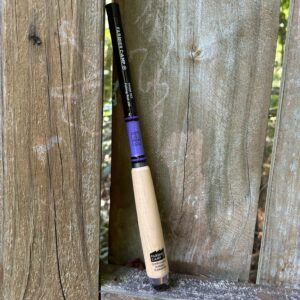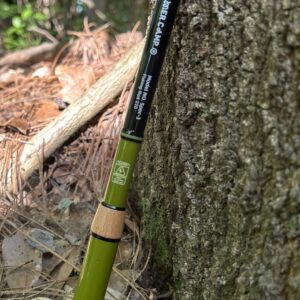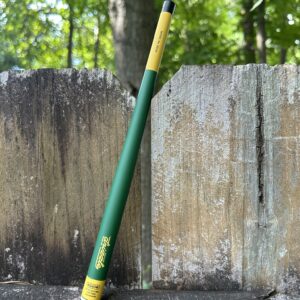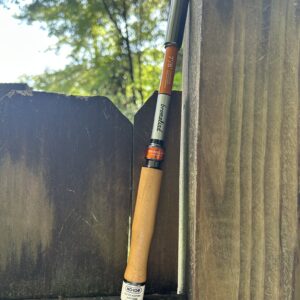Beginners Guide to Microfishing: Tanago Rods
Tanago rods come in a wide array of colors, grips, tones, and lengths and finding the one that best suits your personal style or simply collecting them can be as rewarding as catching fish. I know I’ve said this several times, but it bears repeating: you can make it as simple as you want. There is no need for purpose made equipment imported from Japan (apart from hooks, but you can get away with using midge hooks for fly fishing). Make your own rod, mix your own bait, tie your own line, and have fun. There is no right way to microfish.
With that caveat aside, we can start looking at the ever-growing assortment of rods available. There are a lot of ways to sort them: cheap to expensive, long to short, Chinese Domestic Market vs Japanese Domestic Market vs Handmade, beginner or advanced etc. My goal with this article is to give you a general idea of what is out there to help you decide where you’d like to start.
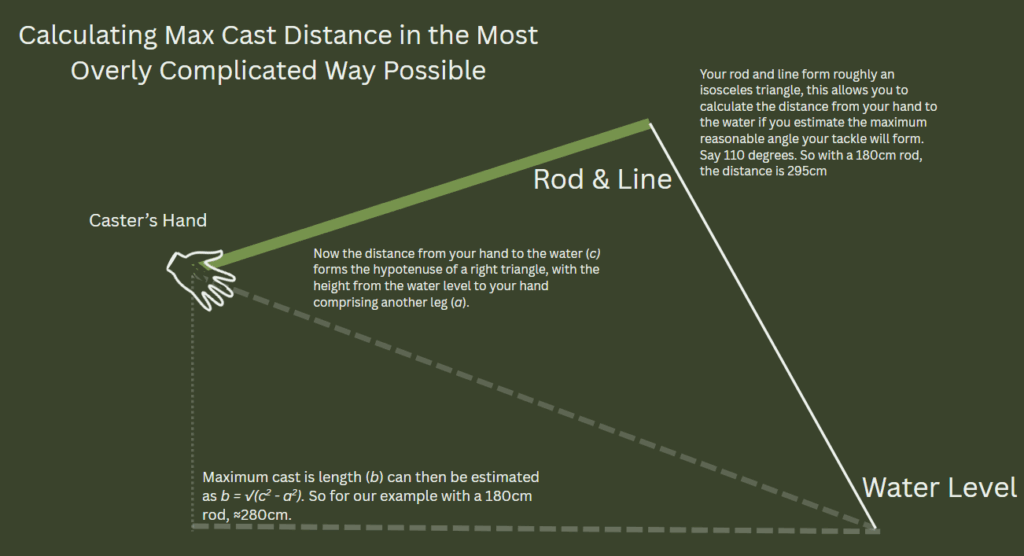
Length
When deciding on rod length you should consider where you’ll be fishing, what you’ll be fishing, and personal preference. Tanago rods do not use reels, so its length is roughly the limit of your line and therefore your reach. Speaking even more roughly, Max Reach = Rod Length x 1.75, though wind, weight, and practice are all factors.
For almost all microanglers, I recommend starting with a rod around 140cm (≈4.5ft) to 180cm (≈6ft), or at least considering that length the midpoint from which short and long are best understood. The shortest (commonly available) rods are 90cm(≈3ft) and the longest around 240cm(≈8ft). Past the 240cm mark you start crossing into tenkara and keiryu rods.
Centimeters, Feet, and Shaku
You'll find all three used to denote the length of the tanago rods and while most are familiar with the first two, the third was new to me. A shaku (
尺) is a unit of length used in Japan derived from the length of the thumb to the tip of the index finger and is equivalent to 30cm. There are slight differences but as we're talking about reasonably short lengths and not building a house it is safe to use the following:
1尺 = 30cm = 1ft
Is longer always better?
You might be wondering, why not always use a longer rod for maximum reach? Why limit yourself? If not, pretend you did so I can answer. Longer may allow you to target more fish, but it can make handling the rod cumbersome. Depending on the number of trees, bushes, or friends around and above you an 8ft stick can quickly become a hindrance. Line also seems to get exponentially more prone to tangling the longer it gets.
The sweet spot I've found is the aforementioned 180cm, but that's a personal preference. If you're unsure it's a good place to start because even if you dislike the length, it is easy to then figure out how much longer or shorter you'd prefer.
Rod Handling
Tanago rods are tough, they're light, strong, and flexible. There are exceptions. Most rods are not broken by accidentally hooking a giant, but by mishandling. When opening, always remove the cap and lean the rod into your palm, dumping out the tip with the lillian. Then, slowly draw the next section out, gently but firmly, repeat until the last section. Packing it in is the reverse, gently pull the bottom section into the handle and proceed upwards until you reach the tip.
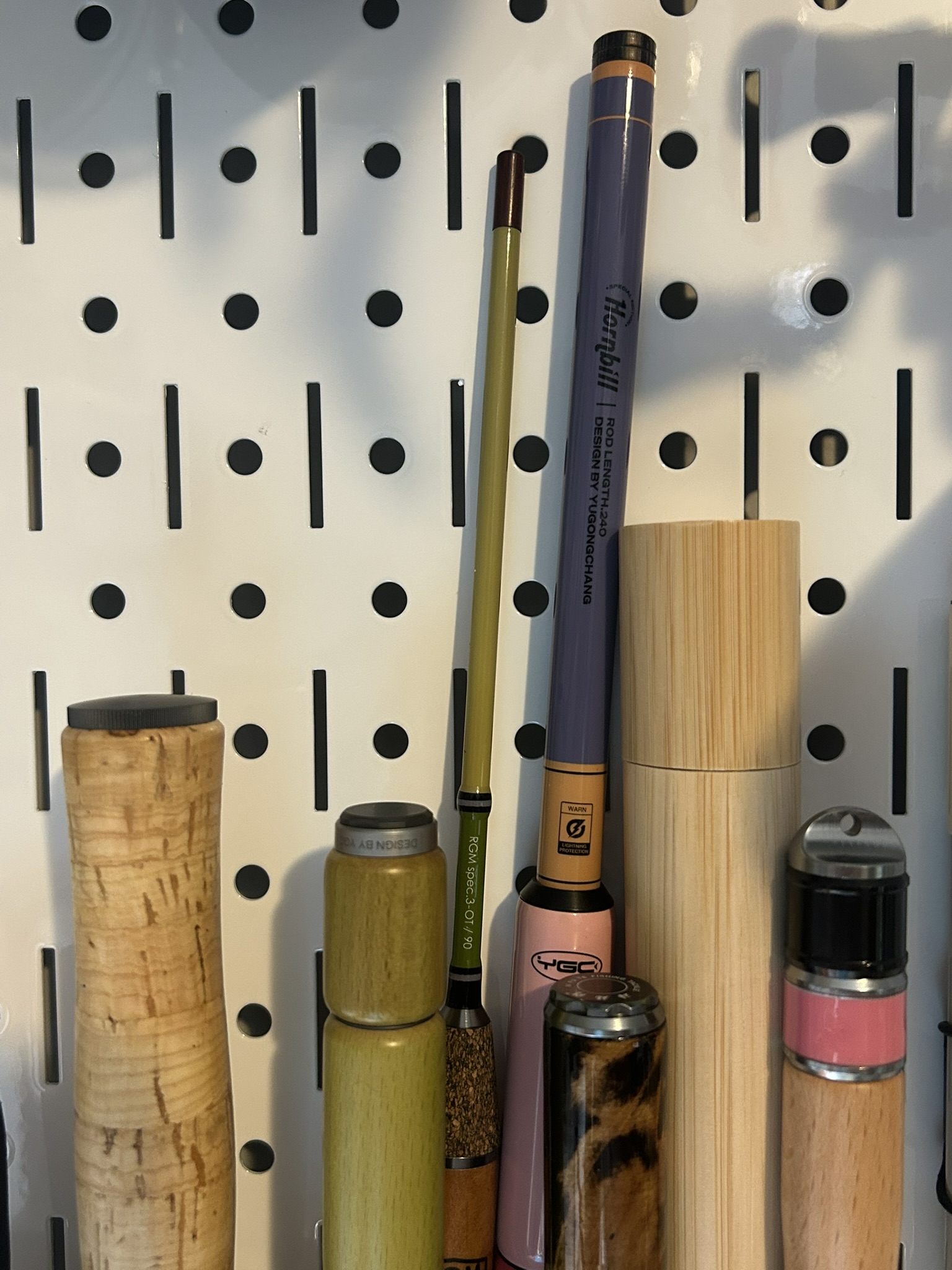
Rod Tone
The next consideration when selecting a rod is the flex, which is usually given using a tone scale. The tone scale, typically expressed as a ratio like 5:5, 6:4, or 7:3, describes how much of the rod bends under load and where along the blank that flex occurs. A 5:5 tone bends deeply and evenly from butt to tip, offering maximum sensitivity and cushioning for ultra-fine lines and microhooks. This full-flex action is ideal for tanago fishing, as it helps detect the subtlest taps from tiny fish and prevents breakoffs on threadlike tippets. Stiffer tones like 7:3 or 8:2 shift the flex toward the tip, providing faster hooksets and more control in current, but at the cost of delicacy. Most dedicated tanago rods favor a 5:5 or 6:4 tone to strike a balance between featherlight touch and practical fishability. It can take some fishing to figure out what flex you prefer and getting a feel for a rod and its unique characteristics is very rewarding.
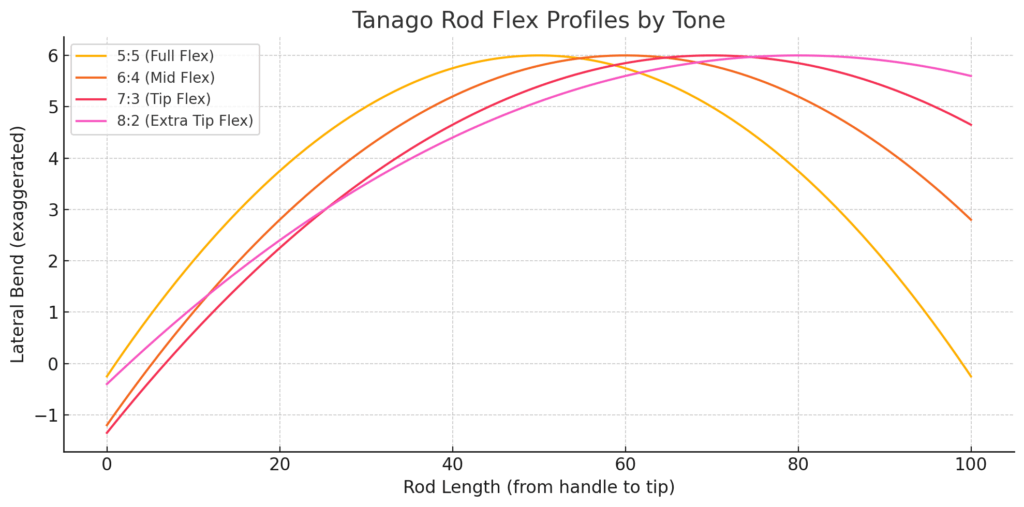
Rods I Have Known and Loved (RIHKAL)
Now to put it all together. You should have some idea in your head about what sort of rod your after and the next thing to consider is looks and cost. Tanago rods can be as cheap as a few bucks to antique relics made by master craftsman that cost hundreds or thousands. But, they'll all catch fish. More expensive rods might be more sensitive, more durable, and more refined, but the degree to which that makes any difference at all is debatable. There are a lot of hobbies where the 'buy once, cry once' mantra holds true, but this is not one of them. Start cheap, if you don't like it, give it to someone who might. We're catching tiny fish, it's hard to really flex on anyone when you're holding a two-inch shiner. So have fun and go as deep as the fun takes you.
These are affiliate links, so if you want to buy a rod, help the site and consider ordering through the links.
